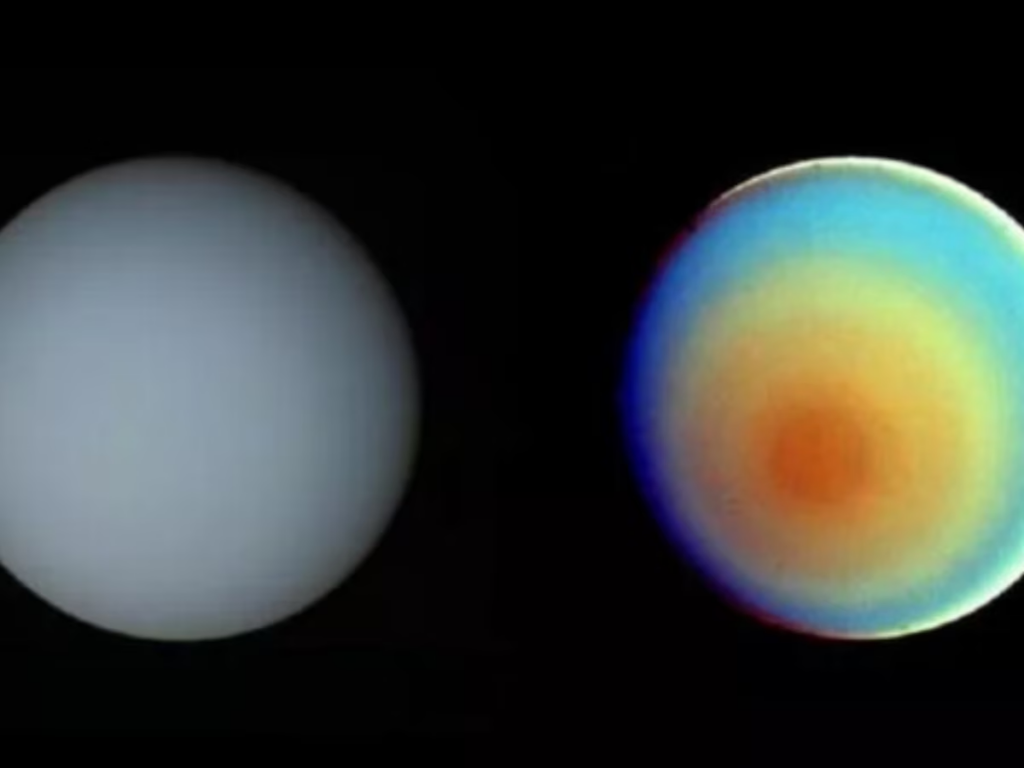Four of Uranus’ largest moons may contain an ocean stratum between their nuclei and icy crusts, according to a new study by NASA. According to NASA, this is the first analysis to describe the evolution of the interior composition and structure of all five large moons: Ariel, Umbriel, Titania, Oberon, and Miranda.
Four of the moons, Ariel, Umbriel, Titania, and Oberon, may contain oceans that are tens of miles deep, according to a new analysis of data from NASA’s Voyager spacecraft and new computer modeling. At least 27 moons orbit Uranus, with Ariel and Titania being the four largest.
The new study, published in the Journal of Geophysical Research, could assist future missions investigating the moons, according to Julie Castillo-Rogez, the main author of the study and a researcher at NASA’s Jet Propulsion Laboratory in Southern California.

NASA found oceans on four of Uranus’ biggest moons.
“When it comes to small bodies – dwarf planets and moons – planetary scientists have previously found evidence of oceans in several unlikely places, including the dwarf planets Ceres and Pluto, and Saturn’s moon Mimas,” she said in a NASA statement.
Therefore, there are mechanisms at work that we do not fully comprehend. She added that the new study investigates the relevance of these mechanisms to other bodies in the solar system that may be wealthy in water but have limited internal heat.
The re-analysis demonstrates how the Uranian moons’ persistent internal heat and certain compounds could cause them to contain water despite their location at the edge of the solar system. Castillo-Rogez told Space.com, “Finding oceans in the Uranian moons would increase the likelihood that ocean worlds are common in our solar system, and perhaps — by extension — in other solar systems.”

Chlorides and ammonia are likely to be prevalent in the oceans of the frigid giant’s largest moons, according to another significant discovery. The latter has long been recognized as a refrigerant. In addition, the study suggests that the probable presence of ions in the water could be an additional source of antifreeze, maintaining the internal oceans of the body, as reported by NASA.
Uranus Orbiter and Probe (UOP) is the provisional designation for a prospective mission to Uranus being developed by NASA. According to Space.com, UOP would include an orbiter to acquire data about the ice giant and its moons and a probe to investigate the planet’s atmosphere for first-hand information. The present investigation can assist scientists in the design of instruments that can detect liquid in the deep interior of such bodies.
